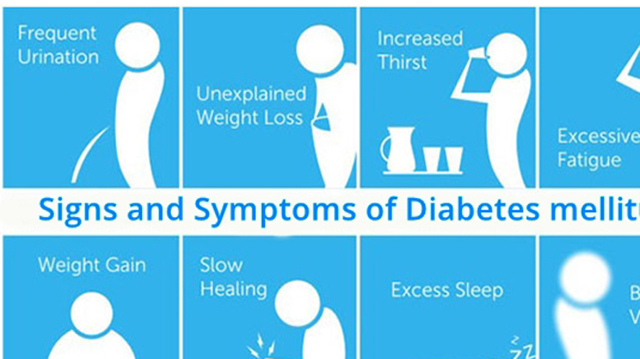Two recent but separate studies have demonstrated how bitter melon and turmeric could be used to prevent, treat and reduce the progression of cancers.
Commonly called bitter melon, bitter gourd, African cucumber or balsam pear, Momordica charantia belongs to the plant family Cucurbitaceae. In Nigeria, bitter melon is called ndakdi in Dera; dagdaggi in Fula-Fulfulde; hashinashiap in Goemai; daddagu in Hausa; iliahia in Igala; akban ndene in Igbo (Ibuzo in Delta State); dagdagoo in Kanuri; akara aj, ejinrin nla, ejinrin weeri, ejirin-weewe or igbole aja in Yoruba.
Turmeric is a spice that comes from the root of Curcuma longa, a member of the ginger family, Zingaberaceae. In traditional medicine, turmeric has been used for its medicinal properties for various indications and through different routes of administration, including topically, orally, and by inhalation.
In Nigeria, it is called atale pupa in Yoruba; gangamau in Hausa; nwandumo in Ebonyi; ohu boboch in Enugu (Nkanu East); gigir in Tiv; magina in Kaduna; turi in Niger State; onjonigho in Cross River (Meo tribe).
Turmeric, also known as curcuma, produces a root that is used to produce the vibrant yellow spice used as a culinary spice so often used in curry dishes. Though native to India and parts of Asia, and is a relative of cardamom and ginger, turmeric has been domesticated in Nigeria. In Asia, turmeric is used to treat many health conditions and it has anti-inflammatory, antioxidant, and perhaps even anticancer properties.
Meanwhile, Prof. Ratna Ray from Saint Louis University in Missouri, United States (U.S.), and her colleagues, in a recent study on bitter melon, made an intriguing find. In experiments using mouse models, bitter melon extract appeared to be effective in preventing cancer tumours from growing and spreading.
The researchers report their findings in a study paper that now appears in the journal Cell Communication and Signaling. Ray grew up in India, so she was familiar not just with the culinary qualities of bitter melon, but also with its alleged medicinal properties.
This made her curious as to whether or not the plant also harbored properties that would make it an effective aid to anticancer treatments. She and her colleagues decided to put this to the test in a preliminary study by using bitter melon extract on various types of cancer cells — including breast, prostate, and head and neck cancer cells.
Laboratory tests showed that the extract stopped those cells from replicating, suggesting that it might be effective in preventing the spread of cancer. In further experiments using mouse models, the researchers found that the plant extract was able to reduce the incidence of tongue cancer.
So, in their new study, Prof. Ray and team tried to find out what might give bitter melon compounds an edge against cancer cells. This time, they used mouse models to study the mechanism through which bitter melon extract interacted with tumors of cancer of the mouth and tongue.
They saw that the extract interacted with molecules that allow glucose (simple sugar) and fat to travel around the body, in some cases “feeding” cancer cells and allowing them to thrive.
By interfering with those pathways, the bitter melon extract essentially stopped cancer tumors from growing, and it even led to the death of some of the cancer cells. Ray said: “All animal model studies that we’ve conducted are giving us similar results, an approximately 50 per cent reduction in tumor growth.”
Ray and colleagues explained that it remains unclear whether or not bitter melon would have the same effect in humans, but Prof., going forward, this is what they are aiming to find out.
“Our next step is to conduct a pilot study in [people with cancer] to see if bitter melon has clinical benefits and is a promising additional therapy to current treatments,” she noted.
Ray seemed convinced that the plant is, if nothing else, at least a positive contributor to personal health.“Some people take an apple a day, and I’d eat a bitter melon a day. I enjoy the taste,” she said.“Natural products play a critical role in the discovery and development of numerous drugs for the treatment of various types of deadly diseases, including cancer. Therefore, the use of natural products as preventive medicine is becoming increasingly important.”
Meanwhile, a recent literature review investigated whether turmeric may be useful for treating cancer. The authors concluded that it might be but noted that there are many challenges to overcome before it makes it to the clinic. The chemical in turmeric that most interests medical researchers is a polyphenol called diferuloylmethane, which is more commonly called curcumin. Most of the research into turmeric’s potential powers has focused on this chemical.
Over the years, researchers have pitted curcumin against a number of symptoms and conditions, including inflammation, metabolic syndrome, arthritis, liver disease, obesity, and neurodegenerative diseases, with varying levels of success.
Above all, though, scientists have focused on cancer. According to the authors of the recent review, of the 12,595 papers that researchers published on curcumin between 1924 and 2018, 37 per cent focus on cancer.
In the current review, which features in the journal Nutrients, the authors mainly focused on cell signaling pathways that play a role in cancer’s growth and development and how turmeric might influence them. Treatment for cancer has improved vastly over recent decades, but there is still a long path to tread before we can beat cancer. As the authors note, “the search for innovative and more effective drugs” is still vital work.
In their review, the scientists paid particular attention to research involving breast cancer, lung cancer, cancers of the blood, and cancers of the digestive system. The authors concluded: “Curcumin represents a promising candidate as an effective anticancer drug to be used alone or in combination with other drugs.”
According to the review, curcumin can influence a wide range of molecules that play a role in cancer, including transcription factors, which are vital for Deoxy ribonucleic Acid (DNA)/genetic material replication; growth factors; cytokines, which are important for cell signaling; and apoptotic proteins, which help control cell death.
Alongside the discussions surrounding curcumin’s molecular influence over cancer pathways, the authors also addressed the possible issues with using curcumin as a drug. For instance, they explain that if a person takes curcumin orally — in a turmeric latte, for example — the body rapidly breaks it down into metabolites. As a result, any active ingredients are unlikely to reach the site of a tumour.
With this in mind, some researchers are trying to design ways of delivering curcumin into the body and protecting it from undergoing metabolisation. For instance, researchers who encapsulated the chemical within a protein nanoparticle noted promising results in the laboratory and in rats.
Although scientists have published a great many papers on curcumin and cancer, there is a need for more work. Many of the studies in the current review are in vitro studies, which means that the researchers conducted them in laboratories using cells or tissues. Although this type of research is vital for understanding which interventions may or may not influence cancer, not all in vitro studies translate to humans.
Relatively few studies have tested turmeric’s or curcumin’s anticancer properties in humans, and the human studies that have taken place have been small-scale. However, aside from the difficulties and limited data, curcumin still has potential as an anticancer treatment.
Scientists are continuing to work on the problem. For instance, the authors mention two clinical trials that are underway, both of which aim to “evaluate the therapeutic effect of curcumin on the development of primary and metastatic breast cancer, as well as to estimate the risk of adverse events.”
They also refer to other ongoing studies in humans that are evaluating curcumin as a treatment for prostate cancer, cervical cancer, and lung nodules, among other diseases. The authors believe that curcumin belongs to “the most promising group of bioactive natural compounds, especially in the treatment of several cancer types.”
However, their praise for curcumin as an anticancer hero is tempered by the realities that their review has unearthed, and they end their paper on a low note: “Curcumin is not immune from side effects, such as nausea, diarrhea, headache, and yellow stool. Moreover, it showed poor bioavailability due to the fact of low absorption, rapid metabolism, and systemic elimination that limit its efficacy in diseases treatment. Further studies and clinical trials in humans are needed to validate curcumin as an effective anticancer agent.”
Meanwhile, an earlier study published in journal Current Pharmacology Reports established that besides diabetes, bitter melon is effective in treating other chronic diseases such as cancer and Human Immuno-deficiency Virus (HIV)/Acquired Immune Deficiency Syndrome (AIDS).
The study is titled “Bitter Melon as a Therapy for Diabetes, Inflammation, and Cancer: a Panacea?” The researchers noted: “Over the last few decades, multiple well-structured scientific studies have been performed to study the effects of bitter melon in various diseases. Some of the properties for which bitter melon has been studied include: antioxidant, anti-diabetic, anticancer, anti-inflammatory, antibacterial, antifungal, antiviral, anti-HIV, anthelmintic, hypotensive, anti-obesity, immuno-modulatory, anti-hyperlipidemic, hepato-protective, and neuro-protective activities. This review attempts to summarize the various literature findings regarding medicinal properties of bitter melon. With such strong scientific support on so many medicinal claims, bitter melon comes close to being considered a panacea.”
According to Food as Medicine: Functional Food Plants of Africa published 2017 by CRC Press, “…Dietary use of bitter melon or its juice decreases blood glucose levels, increases High Density Lipo-protein (HDL)/good cholesterol, and decreases triglyceride levels, thus exhibiting antiatherogenic qualities. Extract of bitter melon in supplement form has been widely used as a traditional medicine for diabetic patients.
When administered alone, it has a modest hypoglycemic effect at doses of at least 2000 mg/day. This botanical supplement enhances the cellular uptake of glucose and promotes insulin release, potentiating its effect, and in animal studies has been shown to increase the number of insulin-producing beta cells in diabetic animals. Bitter melon has also been found to reduce adiposity and oxidative stress in addition to reducing blood triglycerides and Low Density Lipo-proteins (LDL)/bad cholesterol.”









